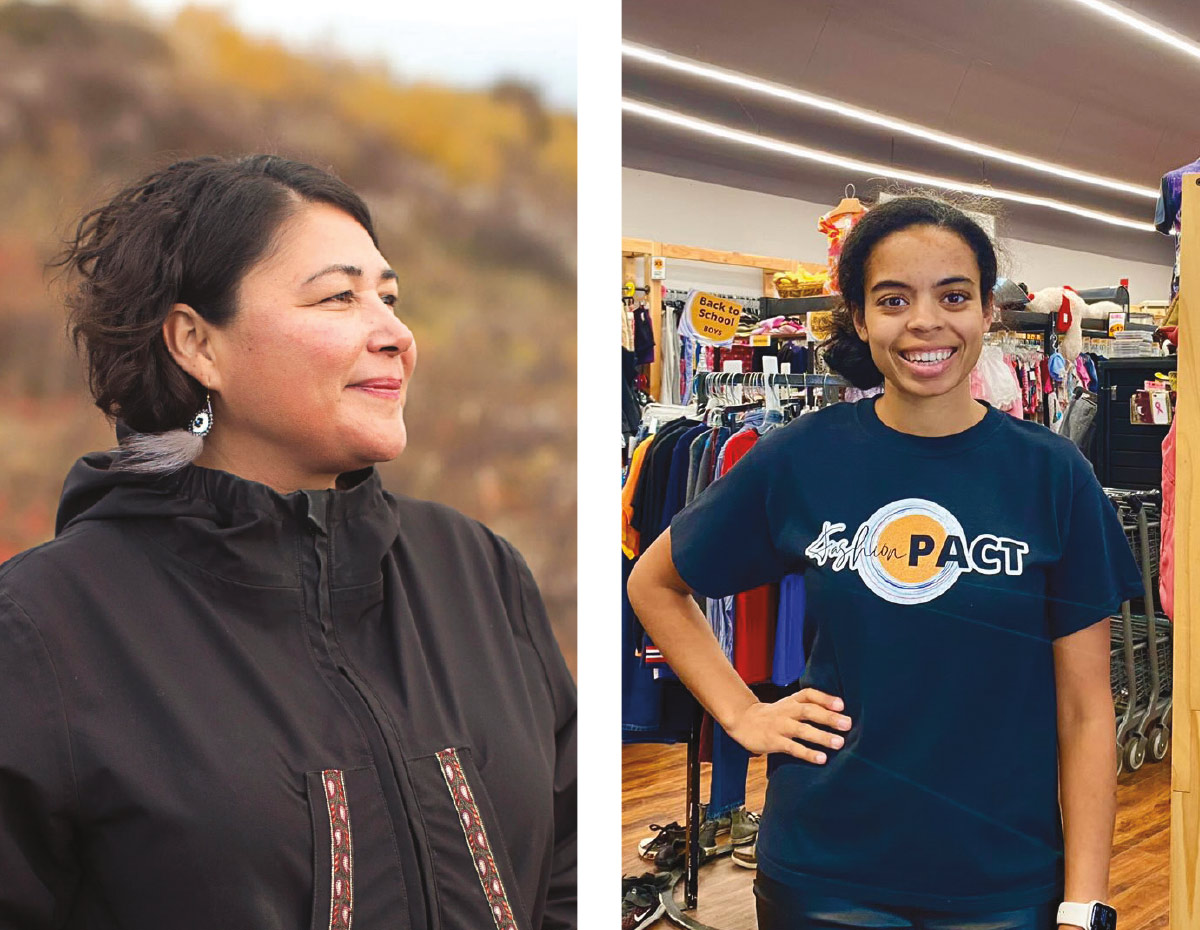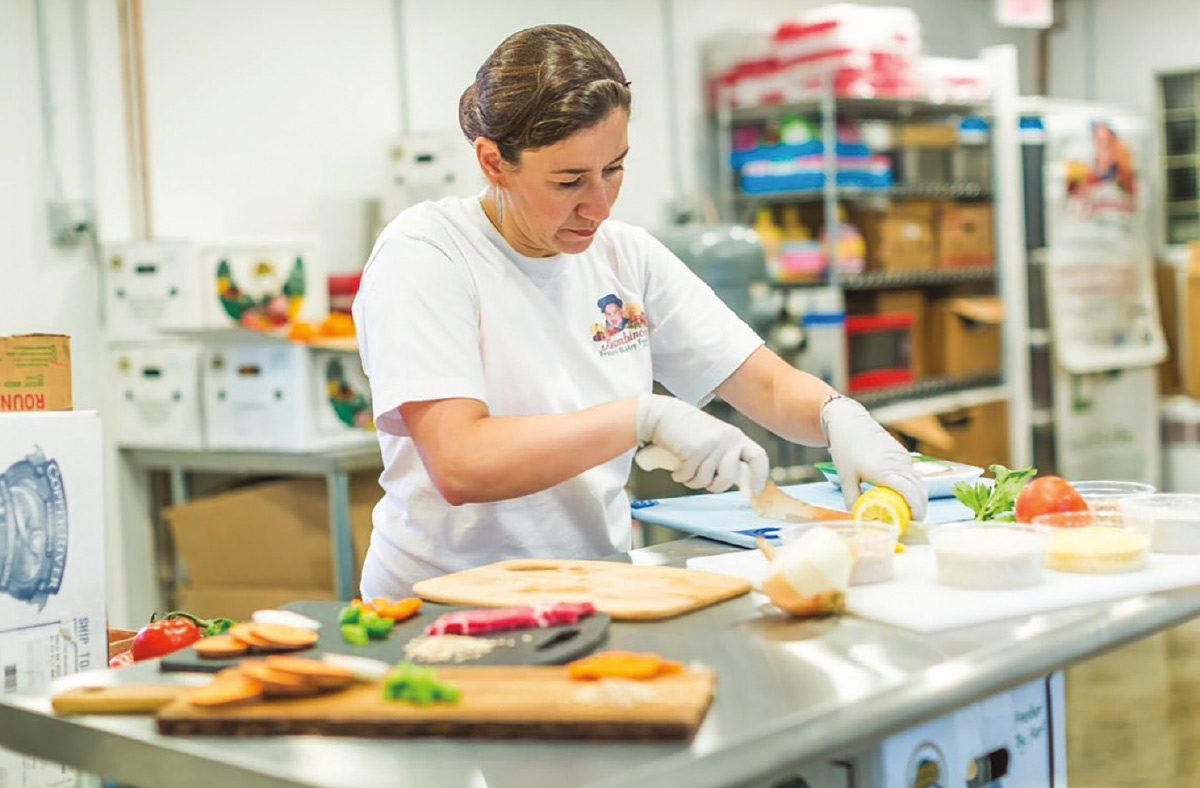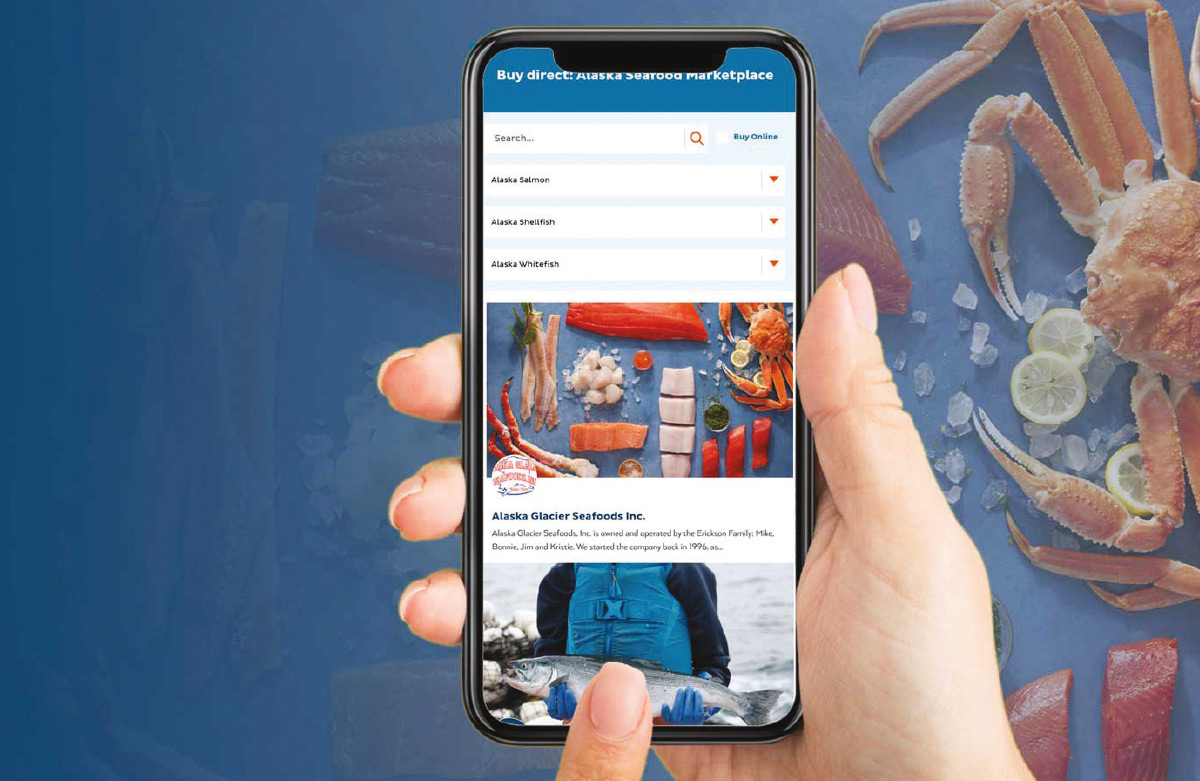n the olden days, when anybody needed to buy a product or find a service, they turned to the Yellow Pages. From accountants to yard services and everything in between, the original business directory had it all, neatly categorized.
The Yellow Pages still exist, of course, even as mobile business directories have proliferated online. Some, like the State of Alaska’s Made in Alaska directory or the Alaska Small Business Development Center’s (SBDC) BuyAlaska Program, are broad, with Alaskan-owned being the primary qualification for inclusion. Other directories focus on a niche like Alaskan-grown produce, Indigenous art, or travel, while Alaska Native corporations have created directories specifically for shareholder-owned businesses.
Inclusion in most directories is free, which makes them an ideal marketing tool for small businesses.
“The best benefit for small business listings in directories is simply that it is free marketing,” says Clay Butcher, co-owner of C+L Creative, an Anchorage public relations agency. “For a small amount of effort, it will help a small business owner sleep well at night knowing that their listings are working 24 hours a day at no cost.”
“In the wake of the pandemic, the Small Business Development Center decided to relaunch the program and really address the needs of businesses,” Nave says. “At that time, there was such a desperate need to support local businesses, so we relaunched the business directory in 2020. We just kind of started fresh.”
The redesigned website organizes businesses into 109 self-selected categories and is searchable by product or service, region, or city/town; searches can be further filtered to highlight business owner diversity, including Alaska Natives, women, or military veterans. The more than 1,000 small businesses listed in the BuyAlaska directory control their own listings, Nave says, and they can include as much or as little information as they want, from a simple store description, phone number, and physical address to multiple photos and links to their website and social media handles.
Butcher says online directories are a resource that can direct potential customers to a business even if they never visit the directory itself, making it important for businesses to be listed in every one that matches their niche.
“Search engine rankings often use the number of directories you are in as a measurement for showing your business higher in search results,” he explains. “If a competitor is listed in all of the main and local directories, they may do better in search results than another business that does not have information in these directories.”
The Marketplace replaced ASMI’s old Suppliers Directory, which was little more than a “very black-and-white listing” of Alaska seafood suppliers, Peters says. It has 164 registered users, but only 71 suppliers have created company profiles to date, roughly 45 of which sell directly to consumers.

BuyAlaska

Alaska Seafood Marketing Institute

“During the pandemic, there was a great growth in those direct markets,” Peters says. “A lot of people switched to selling their own seafood, so that’s why we’ve really focused on supporting them in this tool.”
Meszaros worked full-time promoting arts as an economic driver and created art in her free time. When she decided to hold a First Friday pop-up, she realized she lacked the very things she told artists they needed to put their best professional foot forward.
“I struggled because I thought, ‘I don’t have an email, I don’t have a website, I don’t have the things that I need to go on a business card,’” she says. “[Collective49] was really my need to have a business card for that first event.”
Its expansion into what it is today was a direct result of the pandemic. When the Alaska Federation of Natives moved its 2020 conference online, it had to cancel the in-person art market. Meszaros, having heard directly from artists how economically devastating the lack of in-person events during the pandemic had been to their livelihoods, stepped in. She partnered with Alaska Federation of Natives, the First Alaskans Institute, and Doyon, Limited to use Collective49 as the platform to host the market.
Since then, Collective49 has grown to include 145 Indigenous artists from across Alaska, Canada, and the Lower 48. The site is searchable by artist name or by one of fourteen different categories and, unlike other directories, visitors can purchase items directly through the website.
“It really has mirrored Etsy, only very specific for Indigenous needs,” Meszaros says. “My priority has been Alaskan ivory, fabrics made from polar bears, sea otters, those things that frequently get flagged on Etsy and eBay markets. That really is the point of the platform: to be able to provide Indigenous artists a service, knowing their cultural norms and the legal requirements around selling animal products. I’m not going to pull them.”
Directories aren’t always about finding a product or service; sometimes, they are about finding something to do.
“Anchorage is diverse, and there’s a lot going on here, but I realized we didn’t have any one resource where we could track down what was actually going on arts-wise out in the community,” says Emily Tallman. “In my twenty years living here, it has been a recurring theme to find out about an interesting event after it’s already happened. So I decided to do something about it.”
Dates, times, and locations of seventy-six farmers’ markets, food hubs, farm stands, and community supported agriculture. The association also publishes a print edition in Edible Alaska every two years.
Direct-to-consumer and direct-to-business sellers of Alaska seafood. Industry and international buyers can register and create a profile, allowing suppliers to reach out directly to buyers.
Online calendar lists arts-related events and activities in Anchorage, Girdwood, and Eagle River.
State-run directory encourages Alaskans to shop locally. Lists more than 1,000 businesses from fifty-four communities.
Lists direct-to-consumer Alaska seafood suppliers.
Online marketplace with 145 Indigenous artists from Alaska, Canada, and the Lower 48. Purchases can be made directly through the website.
The Made in Alaska directory lists products more than 51 percent made, manufactured, or handcrafted in Alaska.
Features Alaska tours and activities, gifts, and stores in ten Alaskan communities, including Anchorage, Denali, Seward, and Fairbanks. Aimed at cruise ship tourists.
“There needs to be some component of artmaking involved,” Tallman says of listings that qualify. “So generally we don’t include karaoke or trivia nights, but anything involving visual arts, literary arts, music, arts and crafts, or arts and culture is eligible.”
The AFMA took over hosting the online Market Directory in 2021 as part of a US Department of Agriculture grant aimed at helping farmers’ markets more effectively connect consumers with local produce, says AMFA Co-Executive Director Claire Marshalek. The online directory includes traditional farmers’ markets, food hubs, food stands, and CSAs (community-supported agriculture).
“We call it a farmers’ market directory, but we acknowledge that there are so many small communities that one farm might serve as the entire market,” Marshalek says. “It kind of transcends the farmers’ market and is more of this local foods directory. It’s welcoming to everyone.”
Marshalek says many farmers use the list themselves to decide whether to stay close to home or venture to Anchorage markets, using the Market Directory to help establish markets in their area.
“I’m in Seward, and we started a farmers’ market back in 2020,” Marshalek says. “The directory was kind of our go-to resource of what other markets can we reach out to and learn from and share resources. That is a collaborative effort for other markets to connect with each other, so [the directory] goes beyond the foot traffic.”
“Adding your business information to online directories should be one of the top priorities for small business, without a doubt,” Butcher says. “This will open the door to showing your business in search results, getting online reviews, and raising awareness that your business exists.”
There is no quantifiable data to show whether inclusion in an online directory actively translates to sales. But data analytics and anecdotal evidence show that, at the very least, they successfully direct potential consumers to businesses.
ASMI has seen a quarterly increase in traffic flowing out of both its Marketplace and the Buy Alaska Seafood pages, Peters says. The Marketplace saw a 31 percent increase in on-page events—such as link clicks and form submissions—over the first quarter of 2024, and a roughly 27 percent increase in link clicks on the Buy Alaska Seafood page over the same period.
“Since the launch of the Marketplace, we have had success stories reported between our industry partners and international buyers, which is a great win,” Peters says.
The AFMA also has no data to support how many people found farmers’ markets through their directory, but Marshalek says three years of figures show that “sales amounts at farmers markets have increased each year, and each year there have also been more markets listed.”
Companies frequently contact Meszaros and ask her to connect them with Indigenous artists.
“I get a lot of outreach from international companies based in the United States that want to buy their corporate gifts, and they want it to be Indigenous made or locally made,” she says. “I’ve also been contacted frequently by costume designers or TV shows or movies that are looking for products from artists.”
Directories enable dollars to flow into Alaska from out of state, while shoppers can use the directories to circulate their money in the local economy.
“The money that gets spent in Alaska gets spent again and grows, and that’s really where we’re seeing the impact happen,” Nave says. “The impact of a dollar spent at these local businesses really carries on and has a cascading impact that really has a strong benefit for our economy.”